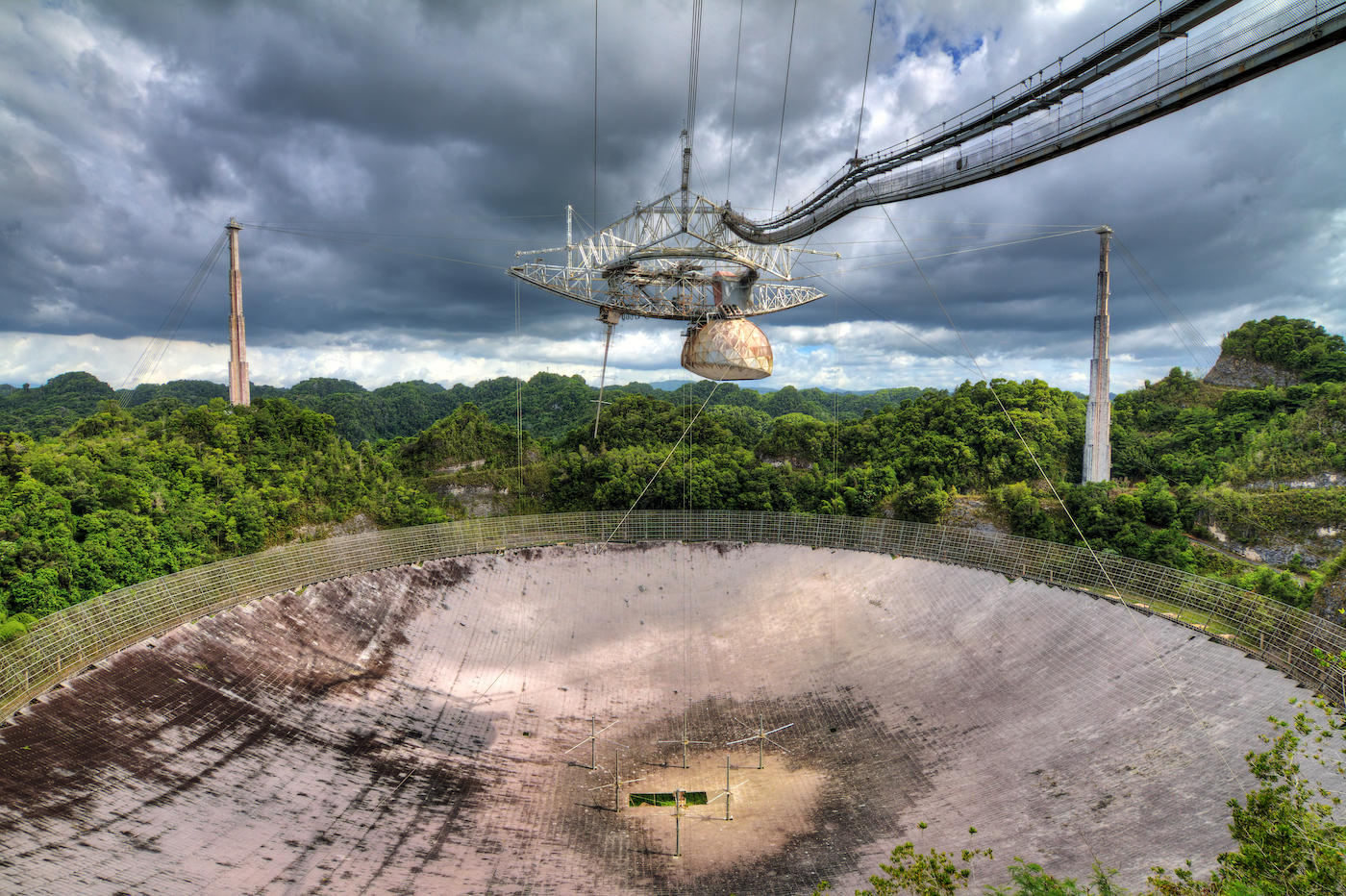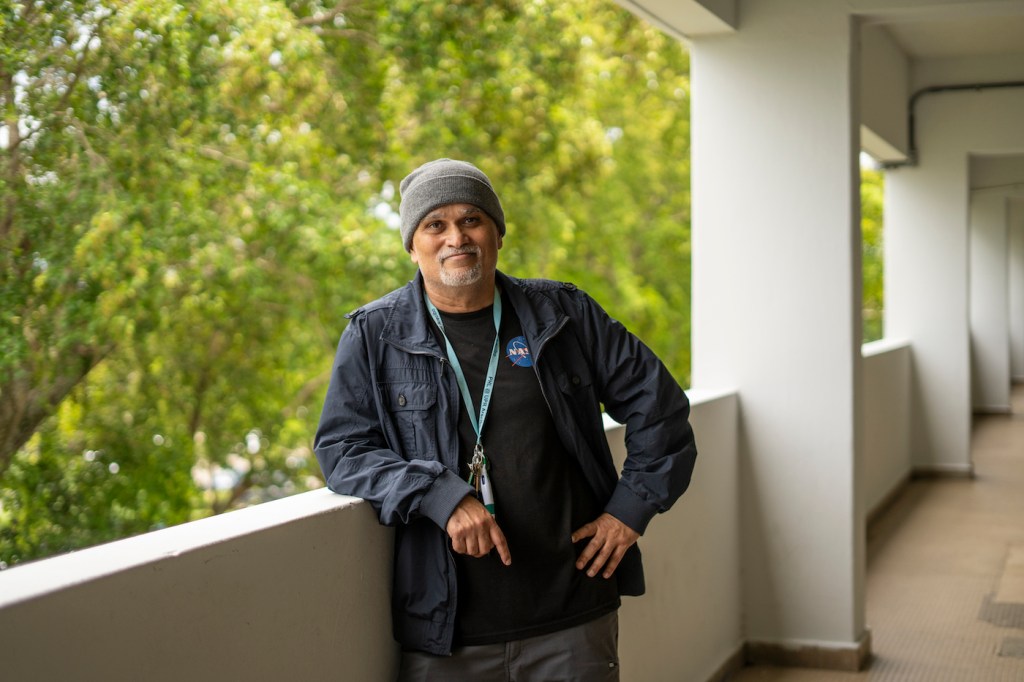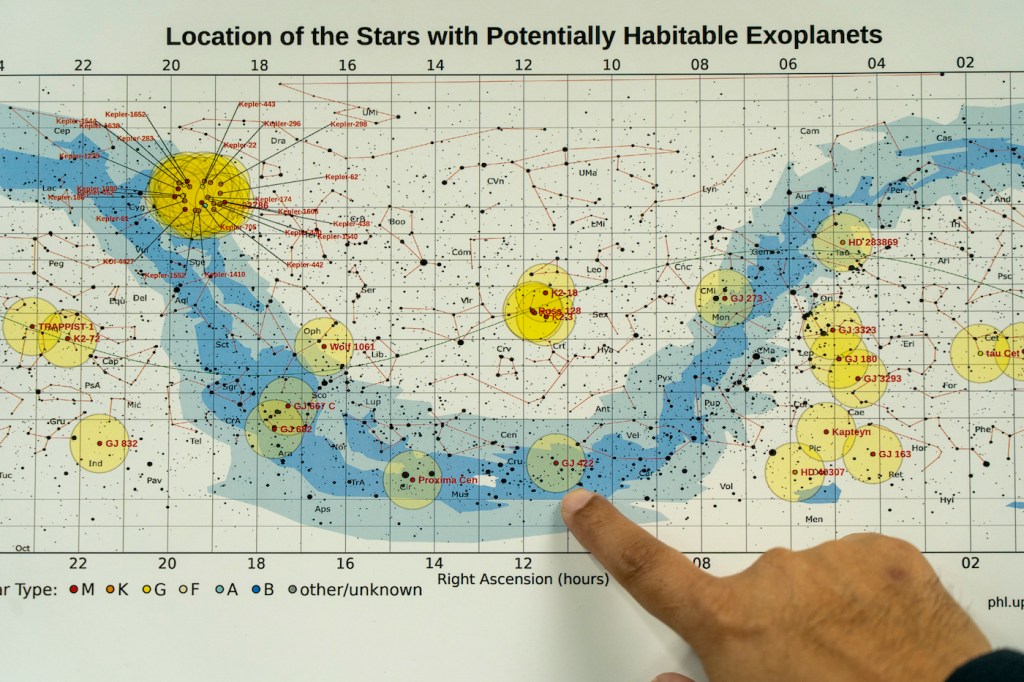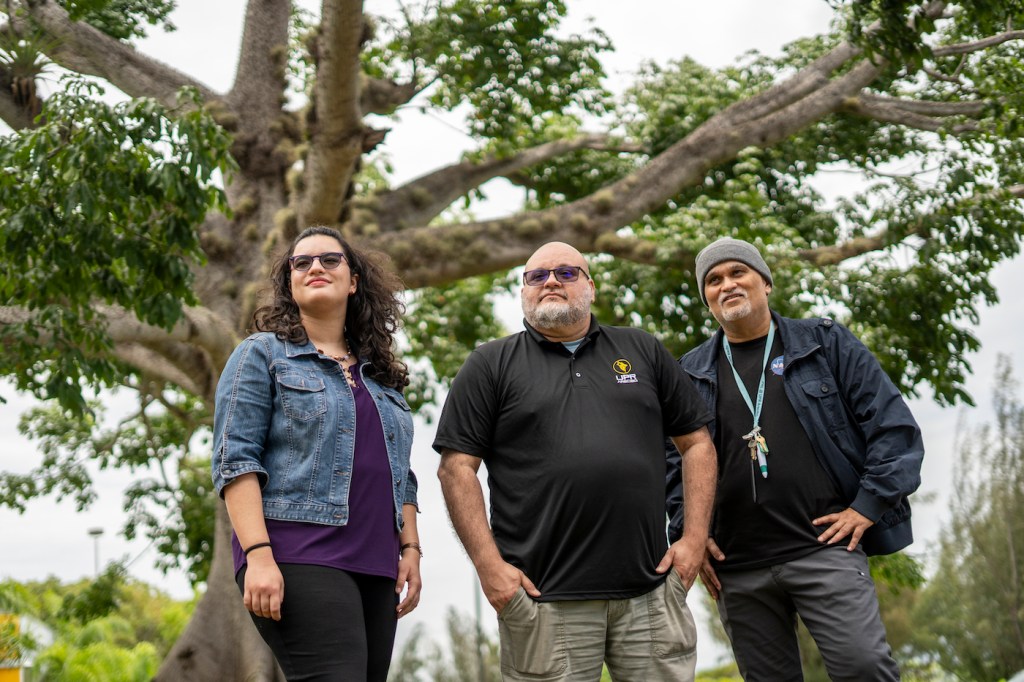What Will Emerge From The Wreckage Of The Arecibo Telescope?
In 2020, Puerto Rico’s massive Arecibo radio telescope collapsed. The research facility may now be on the cusp of a new chapter.

The Arecibo Observatory radio telescope in the hills of Arecibo, Puerto Rico, in 2014. The platform seen suspended by cables crashed down in 2020, causing catastrophic damage to the dish below. Credit: Shutterstock
This story was produced by Science Friday and América Futura as part of our “Astronomy: Made in Latin America” newsletter and series. It is available in Spanish here.
In a corner of his laboratory, Professor Abel Méndez, director of the Planetary Habitability Laboratory at the University of Puerto Rico, keeps one of his most cherished mementos related to the Arecibo radio telescope. Simple sheets of paper hanging on the wall show the schedule where astronomers and scientists from all over the world were assigned blocks of two to four hours to use the telescope and listen to the universe. Méndez’s initials are still there: AM.
For more than 50 years, Arecibo was the world’s largest single-dish telescope. And starting in 2017, Méndez made frequent visits to the Arecibo Observatory, about a 30-minute drive from the university, to focus on the stars. His goal? To explore the habitability of exoplanets. “There are stars that are very active, such as red dwarfs, and others like the sun, which you could say are rather quiet,” he says. “I used the radio telescope to observe which stars were the most stable because those are the ones that planets with a more habitable atmosphere are likely to be around,” he adds. In part, Arecibo helped him understand what to prioritize in his research.
Until December 1, 2020, when the telescope collapsed.

Across Puerto Rico and the scientific community, everyone seems to remember the moment they found out about the collapse of the massive telescope, whose 1,000-foot spherical reflector dish was only exceeded in 2016 by China’s 1,600-foot FAST. “I was at home, and although I wasn’t surprised, I was silent for about two minutes,” Méndez recalls. “I was getting calls from the press and didn’t want to go on the air or see what had happened up close.”
Professor Ángel Acosta, a physicist and geologist who used the radio telescope data for teaching and science communication, learned about it from the media. “To this day, I haven’t been able to finish watching the video of the collapse,” he says, referring to a series of images that were recorded by drone the moment the radio telescope’s Gregorian reflector fell onto the platform below.
Luisa Fernanda Zambrano, a Colombian planetary scientist who had observed and classified asteroids with the Arecibo radio telescope since 2013, remembers that painful day: “I cried, my team cried, we were all crying,” she says from her office in the United States, where she works with the Florida Space Institute at the University of Central Florida.

But, beyond the tragedy, Arecibo left behind an incredible scientific legacy. For example, in 1965, it proved that Mercury’s rotation lasts 59 days. In 1974, it discovered the first binary pulsar, which led physicists Russell Hulse and Joseph Taylor to win a Nobel Prize. In 1981, it produced the first map of the surface of Venus, and in 1992 it identified the first exoplanet. Over the years, it revealed that there were asteroids that traveled in pairs or groups of three. Moreover, in November 1974, thanks to the fact that Arecibo not only listened to the universe, but also had the most powerful radar in the world for emitting signals, it was able to send the first message to outer space. Information about our solar system, the Earth, and the human race was sent toward a cluster of stars called M13, some 25,000 light-years away.
Arecibo also became a pop culture icon. It appeared in the films “Golden Eye,” “Contact,” and “Species.” “It was a tourist attraction, a must-see for scientists on or coming to the island,” Acosta says. In 2023, when only ruins of the telescope remained, Ashley Ann Cariño represented Puerto Rico in the Miss Universe competition with a national costume that paid tribute to Arecibo—a reminder of how the island lost one of the most captivating and powerful instruments for listening to space.
Zambrano, a passionate asteroid researcher and part of the NASA program that used the radio telescope to identify which ones could threaten Earth, still works with the observations she made with Arecibo. “The data taken with this telescope are still being processed because it left us with so much,” she says. She recognizes that she left Puerto Rico in part because her work instrument ceased to exist and, without Arecibo, the possibility of continuing to earn a good salary was low.
Arecibo’s collapse is something of a scientific horror story. After surviving Hurricane Maria in 2017 and a January 2020 earthquake, one of the radio telescope’s auxiliary cables snapped in August of that same year. All observations stopped while another cable was brought in from the United States to replace it. But just a few months later, a main cable came loose, and the entire observatory was vacated. Then, in December, the radio telescope collapsed. Despite a strong push to get the National Science Foundation (NSF) to fix it, a forensic study determined that it was not possible. In August 2023, the entire facility was shut down and the NSF put out a call for proposals for what to do with the space.
The chosen project is a center called Arecibo C3, an initiative that’s expected to launch a pilot phase this month. The three C’s stand for (in Spanish) science, computing, and community. The NSF told El Pais: América Futura in a brief statement that the new center “will continue Arecibo Observatory’s legacy of leadership within Puerto Rico and the STEM community through education, outreach, and workforce development.”
That is, it will no longer be dedicated to astronomy, but to other sciences. However, Méndez believes there will still be a focus on space sciences, since its executive director will be Puerto Rican astronomer Dr. Wanda Díaz Merced, who is blind and known for converting data into audible sound.

There’s anticipation for what comes next. Right now Arecibo is wrapped up in a bit of mystery. One thing that worries Méndez and other scientists is what will happen to the instruments that the Arecibo Observatory had in addition to the fallen radio telescope. “In particular, we want to know what will happen to a 39-foot radio telescope that continues to make important observations,” says Méndez, explaining that he and a group of scientists have asked the NSF if they can come in to see the state it’s in and learn about its fate.
Although this question remains unanswered, the NSF explained in a message to América Futura that a spectrometer and two photometers were sent to Culebra Island, Puerto Rico, to continue doing atmospheric research. They said that the Arecibo C3 team has access to the instrumentation that remains at the site and may decide to incorporate it into some educational STEM activities, and assured that grant proposals will be considered on how to use them.
In Puerto Rico there’s a sense of anticipation and hope. But C3 will not have it easy. The void that Arecibo left behind—to the island, to science, and to humanity—is difficult to fill.
This story was translated from Spanish by Laura González.
María Mónica Monsalve is a journalist of América Futura at El País. She is based in Bogotá, Colombia.